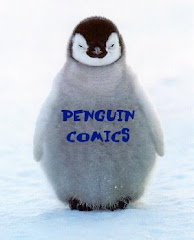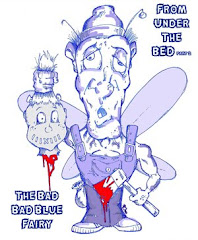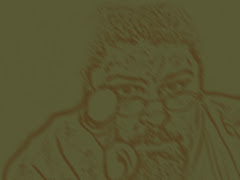15) X-MEN #1 - Est. $ 100.000 +

The team's name is a reference to the "X factor", an unknown gene that causes mutant evolution. Co-creator Stan Lee recalled in his book Son of Origins of Marvel Comics that he devised the series' title after Marvel publisher Martin Goodman turned down the initial name which originally referred to "Xtra Powers", "The Mutants." In addition to this "official" explanation, the X-Men are widely regarded, within the Marvel Universe (as well as by the readers of the series), to have been named after Xavier himself. In Uncanny X-Men #309, Xavier claims that the name "X-Men" was never sought out to be a self-tribute. This has been altered since Uncanny X-Men #1, in which Xavier stated he called the team X-Men "for ex-tra power!"
Features the first appearance and origin of the X-Men (Cyclops, Marvel Girl, Beast, Angel and Iceman) plus the introduction of Professor X and Magneto. Definitely one of the best and most sought after comic books of all time, and available right now for a whole lot of money!! If you want the absolute best of the best, look no further and save up those ducats.
14) AVENGERS #1 - Est. $ 115,000 +

Loki is angered by his imprisonment to the Isle of Silence and seeks revenge on the being responsible, his brother (half) Thor. He uses his mental abilities to trick the incredible Hulk into destroying a train trestle with the illusion that dynamite has been placed on the tracks. As a train approaches Hulk realizes that with the track down the train will surely crash, so standing on a massive boulder he holds the track on his shoulders allowing the train to pass over the crevasse. The conductor sees no dynamite and only notices the mangled track and Hulk standing below it, his conclusion is that Hulk is rampaging again, and attempting to destroy the train. As the manhunt for Hulk begins, Loki uses his powers to prevent the Fantastic Four from hearing the call to assist in locating the Hulk and instead tries to force the signal to reach only Dr. Don Blake (The human persona of Thor.) While initially the signal does not reach the Fantastic Four, it does reach Thor, Iron Man, and Ant-Man (and Wasp.) Reed Richard of the Fantastic Four eventually receives the signal on another band but is unable to assist. Marvel's first super-hero group. Many of the early issues were reprinted in "Marvel Triple Action".
Known for their rallying cry "Avengers Assemble!" and the nickname of "Earth’s Mightiest Heroes", the team originally featured Ant-Man, Wasp, Thor, Iron Man, and the Hulk, all of whom were established superheroes. A rotating roster has been their hallmark, and the Scarlet Witch, Quicksilver, Hawkeye, Vision, Black Widow, and the team’s leader, Captain America have had long histories with the Avengers.
In Marvel's 'Ultimate' line of comics, the team was known as the "Ultimates".
13) ALL AMERICAN COMICS #16 - Est. $ 165.000 +

All-American Comics was the flagship title of comic book publisher All-American Publications. It ran for 102 issues from April 1939 to October 1948, at which time it was renamed All-American Western. In 1952, the title was changed again to All-American Men of War, which lasted until the series was cancelled in 1966.
All-American Comics was purchased by National Periodicals (DC Comics) in 1946. Characters created for All-American, including Green Lantern, the Atom, Red Tornado, Doctor Mid-Nite, and Sargon the Sorcerer, became mainstays of the DC comics line. All-American Comics #16 (DC, 1940) CGC Apparent VF+ 8.5 Moderate (P) Cream to off-white pages. Green Lantern's origin and first appearance is one of the five most valuable comic book issues, and what put it there is not just the significance but also the scarcity -- it's simply tougher to find than the likes of Flash Comics #1 or All-Star #8. Overstreet calls the issue "rare," while Gerber gives it a 7, meaning "scarce." The Green Lantern story is by Martin Nodell, credited as "Mart Dellon," who created the character and got some help on this issue's script from Bill Finger of Batman fame. The issue's cover is by Sheldon Moldoff. Incidentally, the comic is far from an all-superhero affair -- the backup features include Mutt and Jeff as well as Sheldon Mayer's comic artist character Scribbly.
12) AMAZING SPIDER-MAN #1 - Est. $ 175,000 +

Amazing Spider-Man is the original Spider-Man title, launched in 1963 under Stan Lee and Steve Ditko, and it's still going strong. From January 1999 to December 2003 it was renumbered Amazing Spider-Man (Vol. 2). Obviously, there's been a few creative changes since Stan and Steve's day. Currently, this title is published three times per month and has four different teams of writers and artists working on alternating story arcs. It is the core title set in the mainstream Marvel Universe, and an absolute must for even the casual Spidey fan. The Amazing Spider-Man #1 (Marvel, 1963) CGC NM+ 9.6 Off-white pages. This is simply a superb copy of the very first edition of Spider-Man in his own title. Next to Amazing Fantasy #15, this is the second-most-demanded Silver Age comic. This is the first Fantastic Four crossover into another title, as Spider-Man tries to join their group. The cover is by Jack Kirby and Steve Ditko, but interior art is all by Spider-Man's co-creator, Steve Ditko. According to the CGC census as of this writing, there is one copy in 9.8, and this copy is tied with one other for the second-highest grade. You've seen the movie; here's your chance to own one of the finest comics on the planet!
11) MARVEL COMICS #1 - Est. $ 205,000 +

Timely's first publication was Marvel Comics #1 (Oct. 1939), containing the first appearance of Carl Burgos' android superhero, the Human Torch, and the first generally available appearance of Bill Everett's anti-hero Namor the Sub-Mariner, among other features. The contents of that sales blockbuster were supplied by an outside packager, Funnies, Inc., but by the following year Timely had a staff in place. With the second issue the series title changed to Marvel Mystery Comics.
This is called the 'pay' copy because it's the one used by the Lloyd Jacquet studio (aka Funnies Inc.), which produced the comic in its entirety for Timely, to record how much each contributor was paid, on which date and with which check number. For instance, the notation on the cover tells us that cover artist Frank R. Paul received $25 to draw this now-legendary cover. The existence of this pay copy didn't become known until Jacquet's death, and the inside look that it gives the owner at the very genesis of the Timely/Marvel line is what makes this one of the most desirable single copies of any comic book. Also noted on the interior pages are payments to Bill Everett (for the Sub-Mariner story), Carl Burgos (for the Human Torch story), Ben Thompson (Ka-Zar) , Paul Gustavson (the Angel) , and others, all dating from late July 1939. Yes, this comic is the first newsstand appearance of all four of those classic characters, and it's also the first comic book by Timely (later known as Marvel). As such, this is the beginning of the Marvel Universe and the entire pop culture phenomenon that that entails.
10) MORE FUN #52 - Est. $ 207,000 +

More Fun Comics #52 Larson pedigree (DC, 1940) CGC NM- 9.2 Off-white to white pages. This comic is so sought-after that any unrestored copy in even decent condition brings a hefty sum at auction, and the few such specimens we had seen to date are all easily topped by this pedigreed NM- jaw-dropper. Not only is it tied for the highest grade CGC has assigned to date, it's one of only five unrestored copies graded above FR 1.0! No wonder Gerber's Photo-Journal gave this issue a scarcity rating of "8," or "rare." What earned the book a spot among the ten most valuable comics in Overstreet's ranking is the origin and first appearance of the Spectre, which brought a whole new direction to the anthology title that was DC's first comic book series. The Spectre was an ideal complement to other stars of the DC line - as Overstreet put it, "This frightening ethereal hero... gave DC an exciting alternative to their swelling ranks of wondermen." The Spectre tale was written by the co-creator of one of those wondermen, Jerry Siegel, and drawn by Bernard Baily. The eerie, ultra-powerful Spectre, in addition to starring in this series, was so popular that he was made a charter member of the Justice Society in All-Star Comics. He went on to have his own title in the 1960s, a memorable run in Adventure Comics in the 1970s, and his own series in the 1980s and once more in the 1990s! This debut appearance was the only time that the Spectre wore a bluish-gray cape - it was changed to the familiar green shortly thereafter. This copy is from the collection of a comic-loving Nebraska youngster named Lamont Larson. The hoard he assembled way back when has gained no small amount of recognition thanks to having many major key books in high grade.
9) AMAZING FANTASY #15 - Est. $ 230,00 +

"And a lean, silent figure slowly fades into the gathering darkness, aware at last that in this world, with great power there must also come--great responsibility!". Probably the most quoted paragraph in the anals of comicdom, the second to last caption of this famous issue perfectly sums up the plight and formation of this brand new hero.
Amazing Fantasy #15 (Marvel, 1962) CGC NM 9.4 Off-white pages. "And so a legend is born, and a new name is added to the roster of those who make the world of fantasy the most exciting realm of all!" -- Stan Lee Stan's hyperbole strays little from the truth as Spider-Man debuts and reveals his origin in this Jack Kirby/Steve Ditko/Stan Lee classic. Because of the continued popularity of Spider-Man, and the difficulty of finding this comic in the highest grades, Amazing Fantasy #15 has become the preeminent Silver Age comic. This is an outstanding copy, which has the sharp corners and the "look" you would expect of a 9.4. According to the CGC census as of this writing, there are five copies grading 9.4 and one grading 9.6. It sounds like there's not nearly enough high-grade copies to go around, so don't be a timid teen like Parker. But toss a web around it like Spidey. Get it? Good Lord...
8) SUPERMAN #1 - Est. $ 250.000 +

This is it, the comic book Holy Grail, the one that introduced the world to Superman. The cover bears the famous - if somewhat crude - drawing of Superman smashing a car against a rock. Written and drawn by Jerome Siegel and Joe Shuster, the comic introduced Superman as "Champion of the oppressed, the physical marvel who had sworn to devote his existence to helping those in need!" The last survivor of the doomed planet Krypton (duh), Superman could "leap 1/8th of a mile; hurdle a 20-story building … raise tremendous weights … run faster than an express train … and nothing less than a bursting shell could penetrate his skin!" Superman was so popular, he became the first character to get his very own comic book. Superman #1 hit newsstands in the summer of 1939. The Man of Steel has held up pretty well, despite Brandon Routh.
7) ACTION COMICS #1 - Est. $ 250,000 +

Action Comics #1 (DC, 1938) CGC Apparent VF+ 8.5 Moderate (P) Off-white to white pages. No comic bestows more bragging rights upon its owner than a copy of the most important issue ever published, the first appearance of Superman. By general consensus, it's the comic that started the Golden Age, and Joe Shuster's cover remains the best-known in comic history.
Action Comics #1 (DC, 1938) CGC VG+ 4.5 Off-white to white pages. Featuring the introduction of Superman, this book single-handedly raised the comic industry from a second-rate medium of strip reprints to a legitimate business whose sales would eventually surpass even the best selling magazines. Action #1 is the holy grail of comic books, lusted after by virtually anyone who considers themselves a collector.
6) CAPTAIN AMERICA COMICS #1 - Est. $ 260,000 +

The character first appeared in Captain America Comics #1 (March 1941), from Marvel Comics' 1940s predecessor, Timely Comics[1], and was created by Joe Simon and Jack Kirby. Over the years, an estimated 210 million copies of "Captain America" comic books have been sold in a total of 75 countries.[2] Within the comics, the title "Captain America" applies to whomever is chosen by the U.S. government (which views itself as "owning" the persona) to wear the costume and bear the shield. For nearly all of the character's publication history, however, Captain America was the alter ego of Steve Rogers, a sickly young man who was enhanced to the peak of human perfection by an experimental serum in order to aid the United States war effort. Captain America Comics #1 Kansas City pedigree (Timely, 1941) CGC VF/NM 9.0 Cream to off-white pages. Heritage Comics is proud to offer one of the finest copies of Captain America Comics #1 in existence. The ultimate defender of freedom makes his first appearance in this ultra key Timely by landing a right hook on Hitler's jaw. It takes a villain to make the hero, and Cap had the ultimate WWII villains. Not only did he take on Der Fuehrer, but Hitler's protege, the dastardly Red Skull, also debuts in this famous first issue. Created by Joe Simon and Jack Kirby, Cap is far and away the most recognizable of the patriotic superheroes.
5) FLASH COMICS #1 - Est. $ 274,000 +

Flash Comics was an anthology comic book published by All-American Publications and later National Periodicals (DC Comics). The title ran for 104 issues between January 1940 to February 1949. Although the name of the comic book was Flash Comics, the Flash was only one of many different series featured in the magazine. Many DC Comics characters make their first appearances in Flash Comics, including the Flash, Hawkman, Hawkgirl (as Shiera Sanders), and Black Canary. The Flash was later given a solo comic book series, All Flash Quarterly (later All Flash) which ran for 31 issues between Summer 1941 to January 1948. Flash Comics #1 Mile High pedigree (DC, 1940) CGC NM+ 9.6 Off-white to white pages. One of the most important comic books of any age, Flash Comics #1 also featured the origin and first appearance of the the Whip, and Johnny Thunder. This milestone issue is currently ranked as the eighth most valuable comic book of all, its value appreciating more during 2004 than all but three of the Top 25 Golden Age Books.
4) BATMAN #1 - Est. $280,000 +

Batman is an ongoing comic book series featuring the DC Comics hero of the same name. The character first appeared in Detective Comics #27, published in May 1939. Batman proved to be so popular that a self-titled ongoing comic book series began publication in the spring of 1940. It was first advertised in early April 1940, one month after the first appearance of his new sidekick, Robin, the Boy Wonder. Indeed, it's hard to find any unrestored copy -- on the CGC census, purple labels outnumber blue as of this writing. The issue is #6 on Overstreet's list of the most valuable comic books for good reason, as it's got the first appearances of both the Joker and Catwoman, who are among the very few comic book villains to have attained true "household name" status. Also of note are a retelling of Batman's origin and a classic (and much-imitated) cover by Bob Kane and Jerry Robinson. And of course, this is one of very few comic titles to be in continuous publication since the early 1940s, the series is now up to #670 or so!
3) DETECTIVE COMICS #27 - Est. $ 280,000 +

Less than a year aftr the origin of Superman, an artist named Bob Kane decided to create a caped superhero of his own, one much darker, more mysterious, and more "human" than the squeaky-clean Superman. His creation: Batman. Unlike the campy ’60s TV version of the character, the Batman in this first issue was a dark, vengeful crusader who stalked the night (he watches as a bad guy plunges into a vat of acid), presaging the hero’s reemergence in the 1980s in The Dark Knight Returns. Perhaps this darkness was a reflection of the dread of war looming on the horizon in 1939? The cover proclaimed, "Starting this issue: The amazing and unique adventures of THE BATMAN!" and promised "64 pages of action!"
2) FANTASTIC FOUR #1 - Est. $ 425,000 +

The Fantastic Four is a fictional superhero team appearing in comic books published by Marvel Comics. The group debuted in The Fantastic Four #1 (Nov. 1961), which helped to usher in a new naturalism in the medium. They were the first superhero team created by writer-editor Stan Lee and artist and co-plotter Jack Kirby.
There are four core individuals traditionally associated with the Fantastic Four, who gained superpowers after exposure to cosmic rays during a scientific mission to outer space. Fantastic Four #1 (Marvel, 1961) CGC FN+ 6.5 White pages. Collectors may argue about whether or not this comic marked the beginning of the Silver Age, but there can be no doubt that this is the comic that ushered in the Marvel Age of comics. Jack Kirby and Stan Lee brought readers a new kind of super-team in this issue, which features the origin and first appearances of Mr. Fantastic, the Invisible Girl, the Human Torch, and the Thing, as well as the villainous Mole Man. Currently ranked #3 on Overstreet's list of Top 20 Silver Age Comics.
1) MILE HIGH/EDGAR CHURCH Ed. ACTION COMICS #1 - Est. $ 2,000,000

The best copy of the first appearance of Superman, the single most important American comic, wins this particular horse race. This was the easiest book on the list to position (although #2 is a virtual tie in that regard.)
A truly legendary comic, speculation about the value and (more recently) condition of this book has been a favorite topic of conversation for hard core (and even some not so hard core) collectors for more than 20 years. The current owner, (hereby referred to as “The Dentist”), famously overpaid for this book in 1985, spending an unimaginable $25,000 on it. At the time, people openly questioned his sanity. Fortune favors the bold apparently, as that $25,000 investment is now worth at least 40x as much. I say “at least” because there is a popular anecdote that “The Dentist” turned down a $2,000,000 offer* from coin dealer Jay Parrino when Parrino was exploring the comics hobby. Assuming the offer was legitimate, and with the vast sums of money Parrino spent on comics I have no reason to doubt it, it would peg the value needed to actually get the book to change hands somewhere north of 100x the purchase price.
Speculation about the book’s condition is also a popular topic in today’s condition-conscious, CGC world. The best estimate of its condition comes from Stephen Fischler from Metropolis Comics. Fischler, certainly someone in position to know, says that the book would be an Unrestored 9.2 (on CGC’s ten point scale) if it were in a CGC holder. Until we see a photo or a high resolution scan, or Steve Borock et al. get their hands on it down in Sarasota, that estimation is as good as we’re going to get.
Of course, regardless of the number attached to the book, it’s generally agreed that this is the best copy and if that’s truly the case the technical grade is practically irrelevant. It’s the best copy of the best book from the best pedigree and it’s in the best collection on the planet.


















































 Stumble It!
Stumble It!














